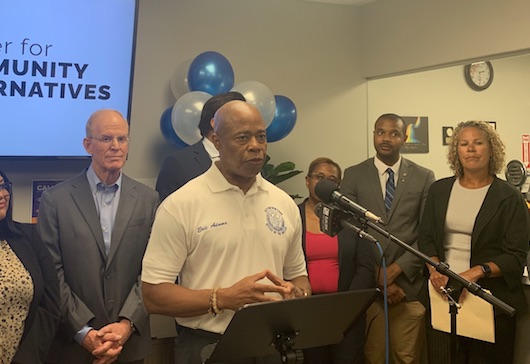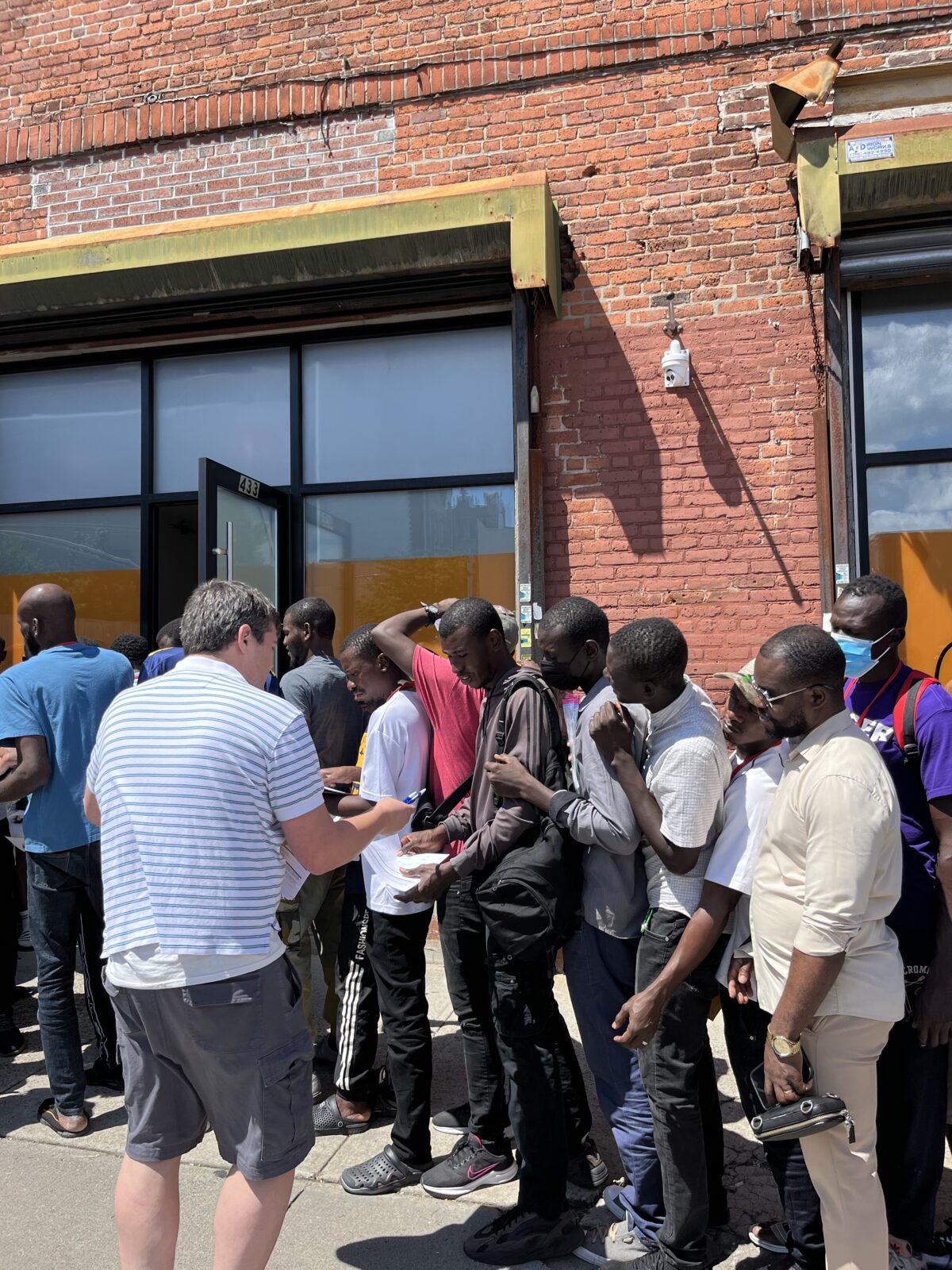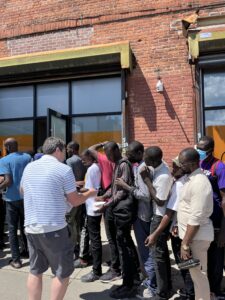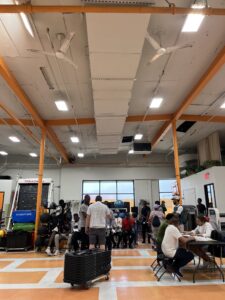Opioid Use Treatment Center Opens in Downtown Brooklyn
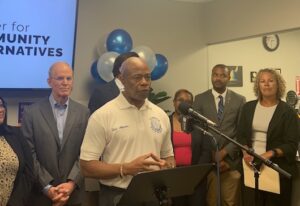
Mayor Eric Adams at the new center.
By Carmo Moniz | news@queensledger.com
Treatment for opioid addiction can be difficult to access, but a new center in downtown Brooklyn is looking to remove barriers to care.
The new wellness center, which is run by the Center for Community Alternatives, will provide opioid use disorder treatment through medication, counseling, employment support, court advocacy and other services at no cost to patients. The center is a part of a New York State Office of Addiction Services and Supports project that will create up to 39 of these programs across the state.
Mayor Eric Adams attended the ribbon cutting ceremony for the center on 25 Chapel St. this past Friday, praising the De Blasio administration’s past efforts to curb drug overdoses and voicing concerns over the rise of fentanyl. Assemblymember Jo Ann Simon, State Senator Jabari Brisport and Deputy Brooklyn Borough President Kimberly Council were also in attendance.
“Because you’re at a bend in the road, it’s not the end of the road, as long as you allow it to make the turn,” Adams said. “On the other side of addiction, we see viable, healthy New Yorkers that want to give back.”
There are currently 35 other outpatient centers for substance use disorder licensed by OASAS in Brooklyn, but this will be the first center to take a holistic approach to treatment.
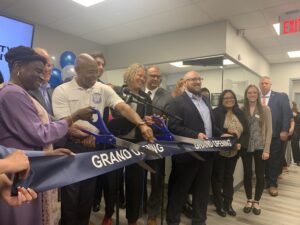
Adams cutting the ribbon at the center’s opening.
Carole Eady-Porcher, a former opioid user who now serves on CCA’s board, spoke about her experiences with drug use and how difficult it was for her to find help. She said that she lost her job due to her drug use and was eventually arrested for selling drugs while pregnant.
Eady-Porcher said that she had sought a treatment program from a judge in her case, but that when her request was accepted the center she was sent to shamed patients for their past drug use. She eventually enrolled in a CCA program for women, which gave her access to employment and counseling.
“Across this country, people who use opioids are overrepresented in jails and prisons, and after at least they are the most likely to overdose due to their reduced tolerance,” Eady-Porcher said. “What New York has needed for a long time is an integrated opioid treatment program that is tailored to the needs of people who’ve been impacted by the criminal injustice system.”
Eady-Porcher said that while treatments for opioid use disorder have existed for years, they have not been widely accessible. She said that if she had had a program like what’s offered at the new center when she was first struggling with drug use, she might have avoided using and being homeless for 12 years.
Black and Latine people are the most common demographics for drug-related arrests in New York City, according to 2023 arrest data. So far this year, there have been around 3,400 arrests of Black people, more than 700 of Black hispanic people and just under 2,000 of white hispanic people over drug-related offenses.
Council spoke about the role mass incarceration and criminalization play in drug addiction, as well as her own experiences with drug use in her family. She said her father was a drug addict and that she lost her sister to a fentanyl overdose last year.
“The thing that brings us here today is a very big deal. The Center for Community alternatives is showing up for Brooklyn in a major way,” Council said. “When we leave from this place of love and care, that's when we turn the tide in the opioid crisis. That's when we put an end to the senseless preventable deaths incurred by our failure to show up in a real way, for those who need our support.”
OASAS commissioner Chinazo Cunningham, who is also a physician and professor at Albert Einstein College of Medicine, said the center aims to improve access to treatment for underserved communities, including minorities and justice-involved people. She said a person dies from an overdose every 90 minutes in New York, and that justice-involved people are up to 40 times more at risk of overdosing than the general public.
“We know we're in a historic place in terms of the overdose epidemic. This is the worst we've ever experienced in this country, in this state and in this city,” Cunningham said. “This work happening here at CCA is so important, more important now than ever before, and specifically for the population that it serves.”


